Barring public thinking and rooftop shouting on flood management, nothing much has happened to address the concerns of the Jhelum and the people living on its two banks in the four years following the devastating floods in 2014, reports Saima Bhat
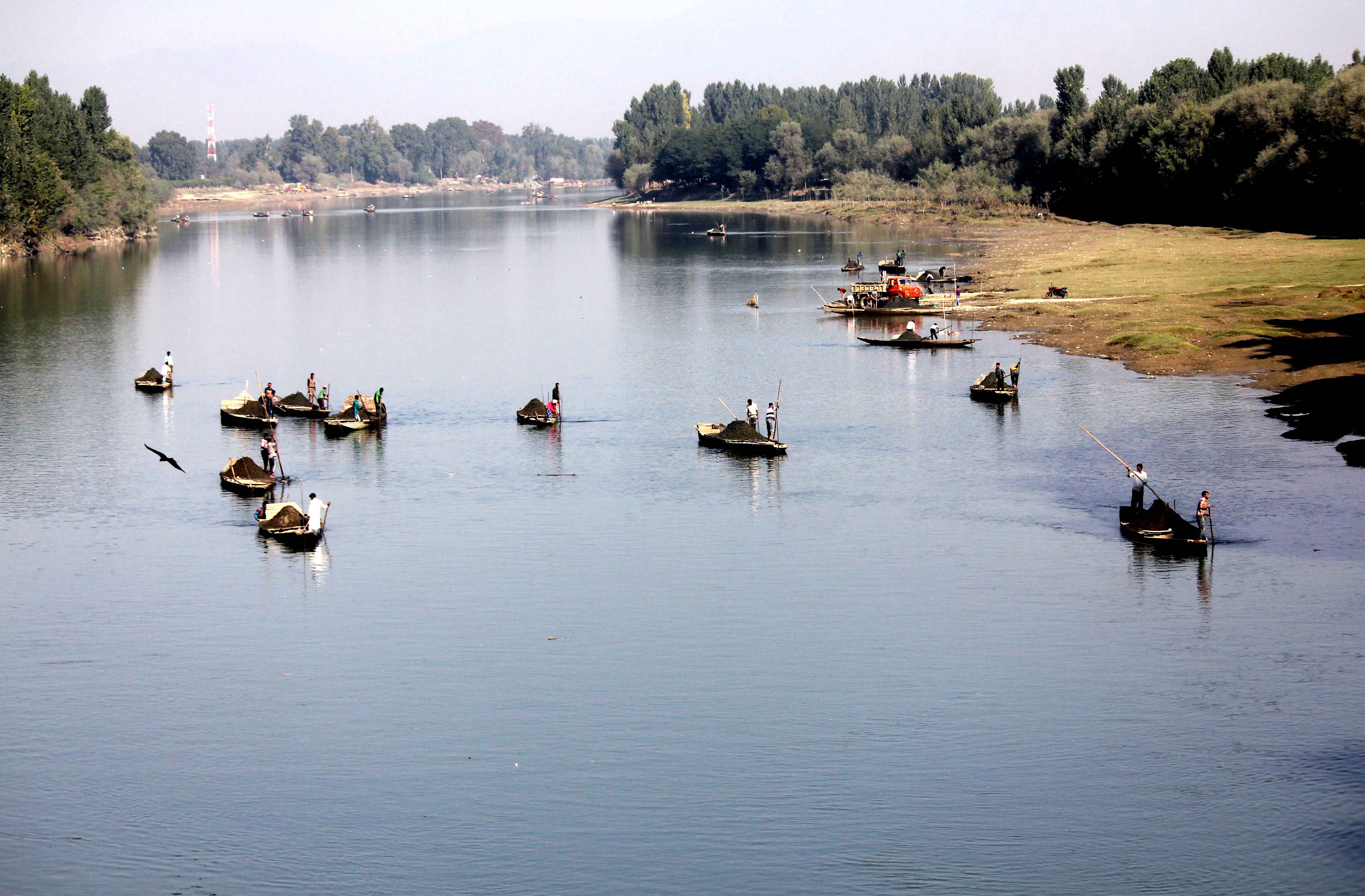
The very start of the Monsoons across the plains gives sleepless nights to the administration in Kashmir. With already one declared flood alert in July 2018, the state, now run by the Governor, is on tenterhooks. Flood Control managers claim to be ‘helpless’ because, off late, rains are less and the cloudbursts are countless.
“A few days ago we had at least 40 cloudbursts in 24 hours,” M M Shahnawaz, the incumbent Chief Engineer at the Irrigation and Flood Control in Srinagar said. “Our department is prepared for the rains but not these cloudbursts that trigger flash floods. We are prepared to manage the normal course of water but what can we do when we get flash floods that fill our Nallas to extreme limits. It happened last week in Romshi Nalla, and then a series of cloudbursts happened in Shopian, Harwan and Budgam.”
Cloudbursts are not a new thing in Kashmir. “It is routine during monsoon but the difference is that earlier we had wetlands and other low-lying areas where this water could get accumulated. In the absence of these places we have our hopes tied to the main river, Flood Spill Channel (FSC) and its 24 other tributaries only,” Shahnawaz said. Happy that in July 2018, the surplus water did not inundate any area, the engineer insisted: “We have some houses built up in river beds and we can’t save them. It is not our responsibility to check who gives them permission.”
In the city near the posh Rajbagh, a multi-level complex came up in the flood basin itself. Though the last government avoided responding to the mass concern, Vohra’s administration had initiated an enquiry about who and how the land of the river was allotted to a rich man who built a fortune on a patch of the riverbank that was a safety cushion during adverse climatic situations.
While the ‘apolitical’ administration has gone after the violators, in this case, there has not been any shift in the state’s own building policy within the city. After the 2014 floods, it was expected that no new buildings will be constructed in the low-lying areas and the wetlands but most of the new constructions have taken place in Bemina, the flood-prone Nowgam-Mehjoor Nagar belt and the Doodh Ganga canal that is now a festering drain connecting upper Batamaloo with the Noorbagh belt. Srinagar Municipality and the Srinagar Development Authority have invested hugely in the area even after September 2014.
After the September 2014 floods that devastated most of Kashmir, every rainfall creates panic among people and the concerned departments. But the officials of I&FC department say they have been working hard since 2008, as they were expecting the routine century floods by that year. Kashmir lives in a 55-year flood cycle.
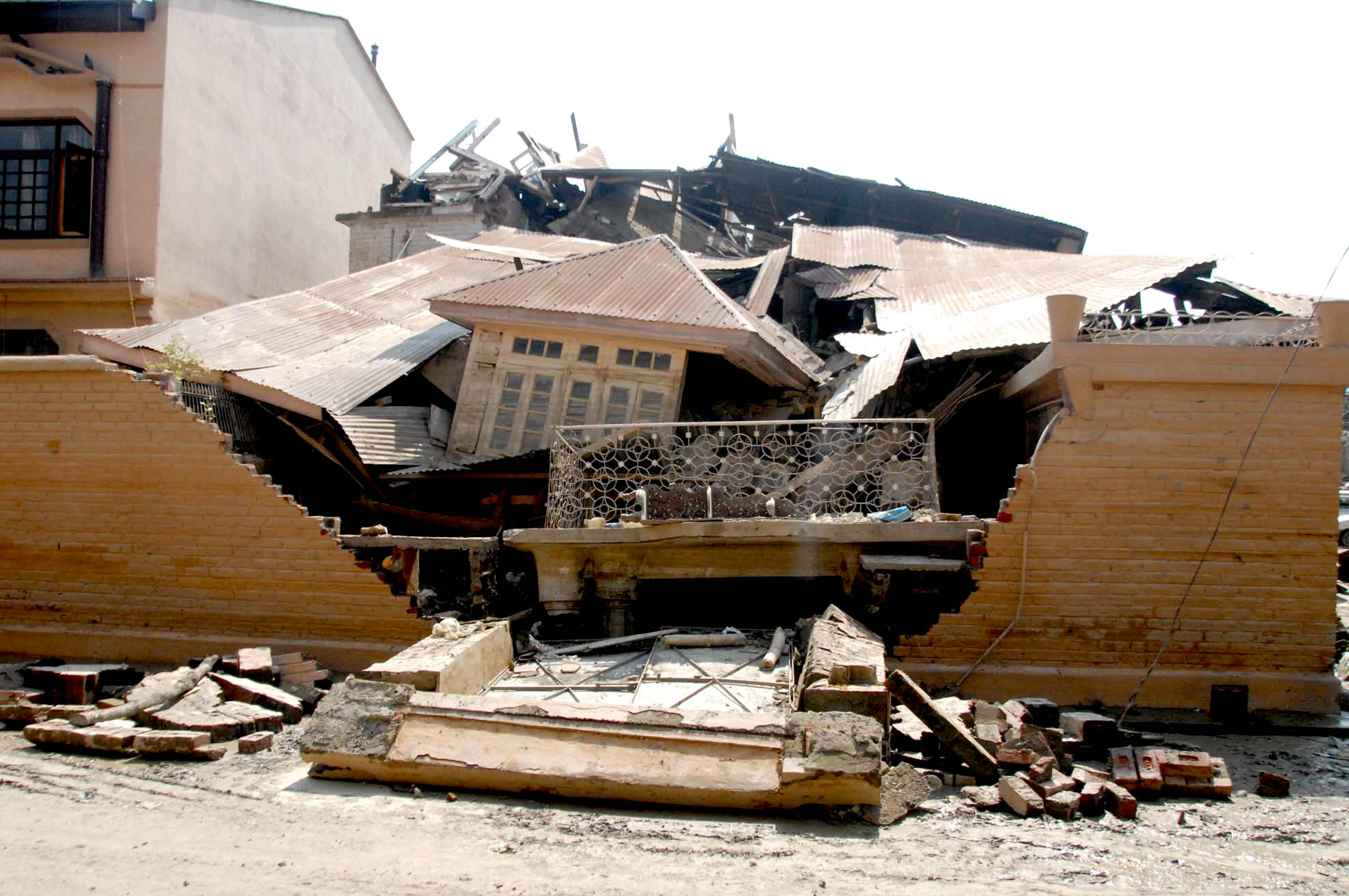
“We had already drafted a report worth Rs 2083 crore before the deluge but that was ignored by the Central government. We were given peanuts and asked to provide first aid-like treatments only. We could purchase just two dredgers from that amount that we stationed in Sopore and Baramulla areas where 5.5 lakh cubic meters was dredged. It cost us around Rs 27 crore for the operation of dredging that included the purchase of equipment and the dredging,” Chief Engineer said.
But as soon as the water levels receded and I&FC department was back to business, they prepared their DPR I with a cost of Rs 399.29 crore. It included the maximum share of Rs 142.33 crore for the land compensation, Rs 82 crore for the restructuring of the embankments in FSC, Rs 46 crore for the dredging in two phases: Rs 20 crore from Srinagar to Panzinara and Rs 26 crore from Sopore to Baramulla, Rs 35 crore for the construction of two bridges over FSC in Shariefabad and Naidkhai, Rs 75 crore for the construction of concrete walls and Rs 75 crore for adjacent works from Khanabal to Baramulla.
This plan, one I&FC engineer pointed out, they could increase the carrying capacity of the outfall channel from 27000 to 32000 cusecs. “We then worked on FSC as its capacity had decreased to just 2800 cusecs. We restored it to 6000 cusecs after floods. And now we have increased it from 16500 up to 22000 cusecs at Naidkhai.”
After building two bridges in Naidkhai and Shariefabad, which I&FC department considers as major bottlenecks, the department has purchased 1579 kanals of land. They wanted to acquire 1778 kanals of land from the people so that this area is a no-construction belt and is used by the water flows whenever the Jhelum surges its levels.
They claim they have rehabilitated people at Naidkhai as well. As many as 54 structures stand demolished but 150 more structures are yet to be demolished. Besides, they claim to have increased the carrying capacity of river Jhelum from 32000 cusecs to 42000 cusecs and the creation of protection walls on 200 meters.
Shahnawaz said the works done under DPR-I were done on priority because these primary nature works will provide the basis for other long-term plans and some of them have been included in the DPR-II, which is yet to get started.
Of all these flood protection projects, the I&FC officials regret the hype was given to the dredging part only when they had done other works as well.
But dredging is also a key component. The I&FC department had allocated the dredging contract of river Jhelum in the Srinagar and Baramulla areas to Reach Dredging Ltd, a Kolkata-based company, which started its work in 2016. The areas from Bell mouth of FSC Shivpora to Panzinara was part of the work allotted to this company in Srinagar city. The company was supposed to dredge out seven lakh cubic meters of sand and soil (mud) with a rate of Rs 289 per cubic meter (cum) The extraction work was allotted for disposal with a payment of Rs 200/cum for sand and Rs 35/ cum for soil or mud.
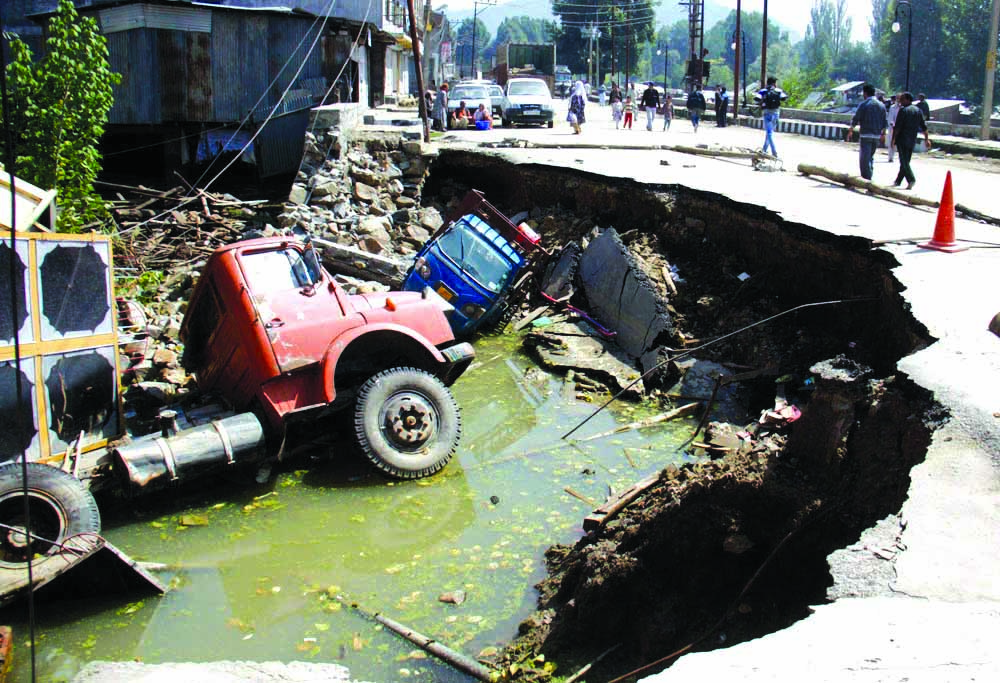
The department paid the company at a rate of Rs 289/cum for dredging and the company buys the extracted material at Rs 200 and Rs 35/cum, which should have been done under the supervision of I&FC department. But reportedly the officials rarely visited the sites other than some particular sites in Srinagar.
“The company was getting the benefit of dredged out material as per their comfort. They showed the dredged out material as more of mud and less of sand, which resulted in the loss to the government exchequer,” says an insider. “Besides, the company is mostly in the extraction of sand instead of mud for more gains thus ignoring the extraction or dredging plan at times.”
In addition to the mechanical dredging, shoal clearance near shores ideally happens with the bidding process based on volume, which has to be taken up by the department. “In this shoal clearance, the contractors and I&FC department never measured the extracted material or the area. It is a two-way process where the contractor, as well as the line-officials, get benefitted,” says a contractor, privy to the developments.
“Recently one machine was busy with the extraction of sand in the name of shoal clearance at Shivpora. No one was there to monitor the working from the department. Moreover, the dredging work going on near LD Park was also without any surveillance from the department,” he said.
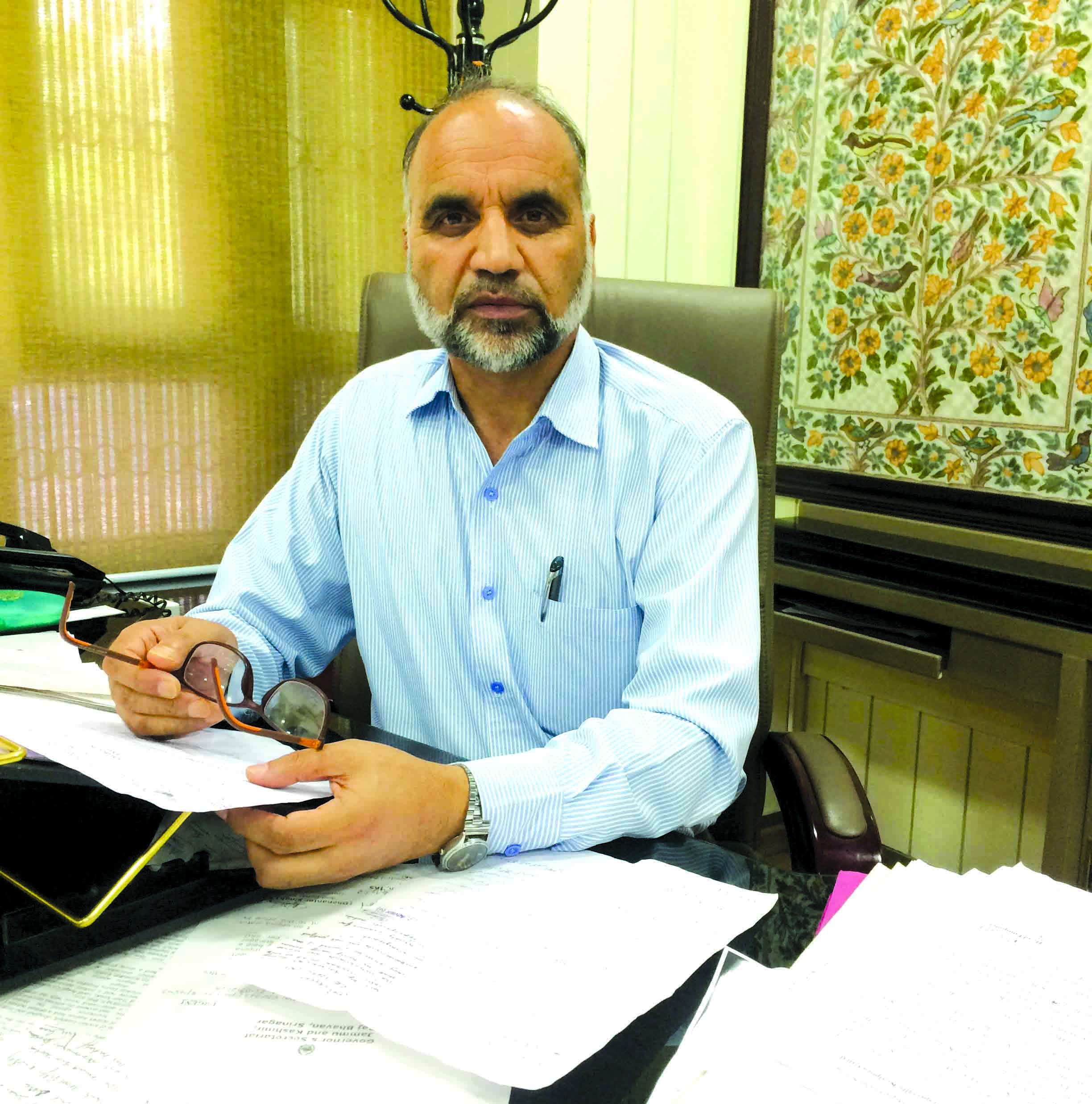
Besides, the department had provided licenses for manual extraction to the boatmen at an estimated fee of Rs 1500 per month. The permission was granted to only 46 boats in Srinagar but the boats operational in the river are many times more than that.
In the areas beyond Srinagar especially in south Kashmir (starting from Pantha Chowk towards Pampore) the Department of Geology and Mining has started to bid shoal clearance in addition to the works undertaken by the I&FC Department. Allegedly these two departments have no synchronization and they often encroach into each other’s area of responsibility.
“Both the departments worked on different lines without consulting each other and ignoring technical aspects,” one contractor privy to the developments said. “It may prove fatal if the status quo continues.”
During the July flood scare, the weakest spot was found at Galander, in Pampore outskirts, where a private company Ramky was constructing a four-way road. “They had lowered the embankment and it could have proved disastrous if the locals and the government had not reached the spot to plug in,” a senior resident, not living far away, said. Shahnawaz admitted it was a “constructional error” and the treatment works of weaker spots was not done fully. “So far we have done 9200 meters only from Khanabal to Boniyar,” he added.
Talking about the hugely reported dredging issue, Shahnawaz says they have dredged around 14 lakh cubic meters of sand and mud from the river, which includes 6.5 lakh cubic meters in Srinagar and 7.42 lakh cubic meters in Sopore-Baramulla region. He says the dredging contract under phase-I, has expired on March 31, 2018.
But as per the local sources in the Sopore and Baramulla areas, the said company was dredging at ‘selective’ places only where they get maximum sand and other gravels and boulders were collected, which they sold out for additional benefits. Meanwhile, the company was reportedly harassing the local sand contractors and diggers as well.
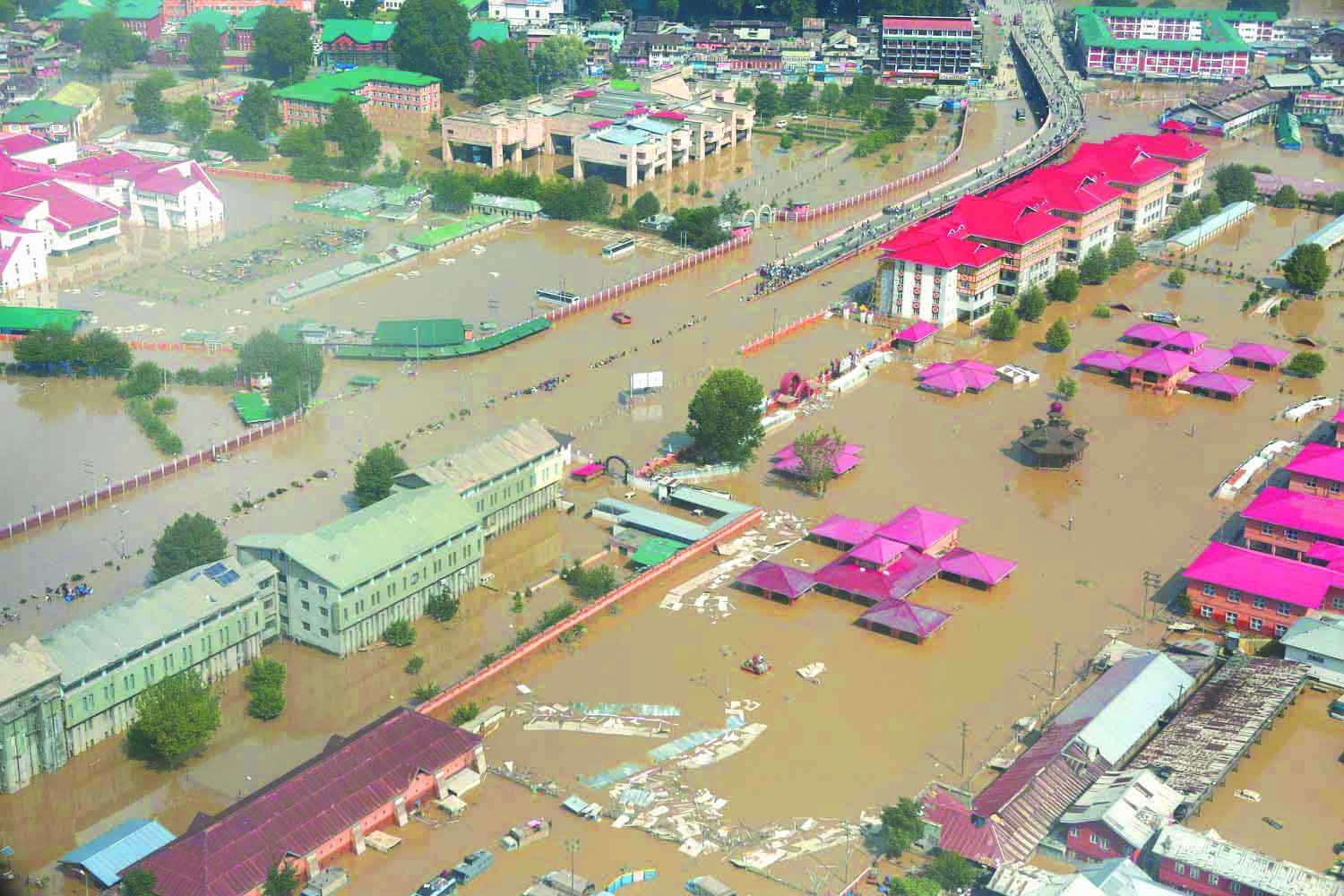
“They were supposed to start dredging from Khanpora Bridge to Sheeri last year but instead they started from Drangbal,” Abdul Hameed, a local contractor in Sopore, said. “When boulders and silt started to come out from the river, the company left the work incomplete and started dredging at Weerwan near Pandit Colony where a huge quantity of sand was dredged out which was sold out at a huge amount. Just a paltry amount – on account of sale of sand, is being paid to the government. They had hired a local contractor to sell the sand.” He alleged that no royalty was being obtained by the concerned department.
Dredging is a two-way process where an extra amount of sand and soil needs to be extracted from the river. While part of it is being sold, a part of it is used for the strengthening of the embankments. “We had done strengthening in the initial phase but the FSC is untouched so far,” an official said. “We have done bidding; it is giving us revenue for the time being till we start its work. Initially, we had to focus on bottlenecks at Shariefabad and Naidkhai, rest is not our priority for time being.”
The special branch of J&K Police had also submitted a report to the government in 2016, during the brief patch of governor rule, suggesting a thorough investigation in the first phase of Rs 399-crore flood management programme around Jhelum. The officials claim that “of Rs 399 crore project, only Rs 196 crore was spent in last four years till March 2018.”
This was the first phase of the project of Rs 1577 crore sanctioned under the Prime Minister’s Development package announced in 2015.
However, the government never followed up on the police report. The team claims that they were unable to find the place where such a humongous amount of sand was deposited, at a time when the government claimed that around nine lakh cubic meters of sand were dug out from the river basin till 2016. The investigators observed a similar trend in 2017 and 2018.
But Shahnawaz says the dredging contract is done. “If the work was allotted for 46 crore but final amount was just Rs 41 crore that was bid by this company and Rs 11 crore was given to the government as revenue,” he said. Instead, I&FC is looking forward to the DPR II. The project has been entrusted to a Pune-based company. They have already started working on the formulation of the DPR, which is approved and they will be starting it as soon as they formulate the DPR.
But a section of the I&FC officials believes the works to be taken up under DPR-II are unlikely to resolve issues because it will mitigate only 60,000 cusecs at Sangam. “Our ultimate target is to manage 1,15000 cusecs and that only could save Kashmir from the century floods.”
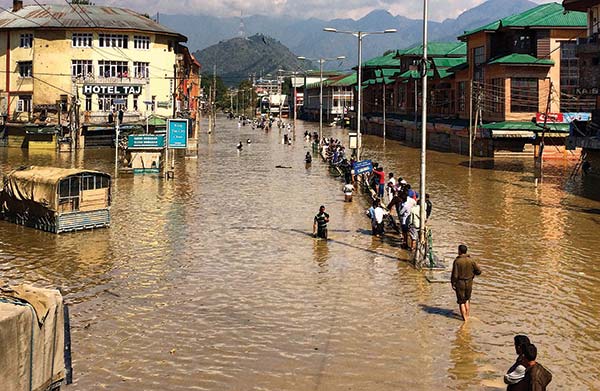
With this target in mind, the I&FC has started its exercise and is keen to get support from the World Bank-funded Jhelum-Tawi recovery project. Shahnawaz hoped for some relief as this project envisages the construction of flood storage dams up streams of south Kashmir on various tributaries like Lidder, Vaishaw, Romshi, Waithwathru, Bringi, Saindran, Rambiara and many other tributaries in central and north Kashmir.
“These dams will be built as per the Indus Water Treaty agreement and the international consultancies have approved the plan,” Shahnawaz said. “These dams will arrest the water which will be controlled manually. We can release it after giving some pause when our river is free then we will operate these dams. We have a permissible limit of 925 million cubic meters, which is double the capacity of Wullar.” The Wullar lake at its peak has a capacity of 510 million cubic meters.
The DPR-II includes the construction of an alternate 80 km FSC at Dongripora in south Kashmir to Wullar Lake in north Kashmir. It will come up at Rs 18,000 crore. This is aimed at taking away an estimated 60,000 cusecs from the river – almost half of the discharge that Jhelum had in September 2014, in case of emergency to the Wullar lake directly.
Right now, the condition of the main buffer, the Wullar Lake is ‘seriously bad’. Insiders believe the present capacity of the lake has reduced and it can manage just 6 feets of water against its original retention capacity is 510 million cubic meters at HFL. The officials in I&FC refuse to comment on its condition saying it does not fall under their jurisdiction.
“Unofficially the lake capacity has decreased by 20 per cent due to siltation and it has more than 20 lakh trees. The lake is under the forest department, so dredging, conservation and its maintenance is their responsibility. But in the last phase of our DPR, we will be working on Wullar and some other water bodies like Hokersar, Nowgam, Heygam lakes and Ancharsar,” Shahnawaz said.
In recognition of its immense ecological and socio-economic importance, the Wullar was designated as a wetland of international importance under the Ramsar Convention in 1990.
Nearly a year back, a seven-member of ministerial panel cleared a Sino-India company to dredge Wullar, more than six-year after the Rs 389 crore project for the conservation of the lake was drafted.
The project included retrieving the encroached area of the lake and its catchment area, water management and dredging to recreate its holding capacity. Conservation of the water body requires felling an estimated 21 lakh trees, mostly willows, inside the lake.
The union environment ministry had approved Rs 120 crore under the project out of which Rs 60 crore were released to the state government. “Of Rs 60 crore, almost Rs 45 crore was spent on catchment area treatment and demarcation of the original area of the lake,” an official said, adding all the works including dredging of one sq km of the lake were undertaken locally. But the contract was cancelled last month by the Governor.
A study of the lake by Wetlands International has found its original area was 217.8 sq km, which included 58 sq km of associated marshes. Its area was reduced from 157.74 sq km in 1911 to 86.71 sq km in 2007. Overall, there was a reduction in the lake area by 45 per cent, mainly due to agricultural activities and the willow tree plantation on its banks and within the shallow patches of the lake.
The Wullar Conservation and Management Authority (WUCMA), a state forest ministry organisation which is managing the lake, has now decided to float tenders afresh to start dredging of the lake.
After the contract was cancelled, the National Conference vice president Omar Abdullah demanded an investigation for awarding the contract to this company.
Historically, it was dredging in and around Wullar lake that was a key factor in the flood management of Kashmir. It was actually the requirement for the energy to run the dredgers that Maharaja Hari Singh had to invest in the Mohra power project. The dredging in the tail end of the river would improve the velocity of the otherwise sluggish Jhelum.
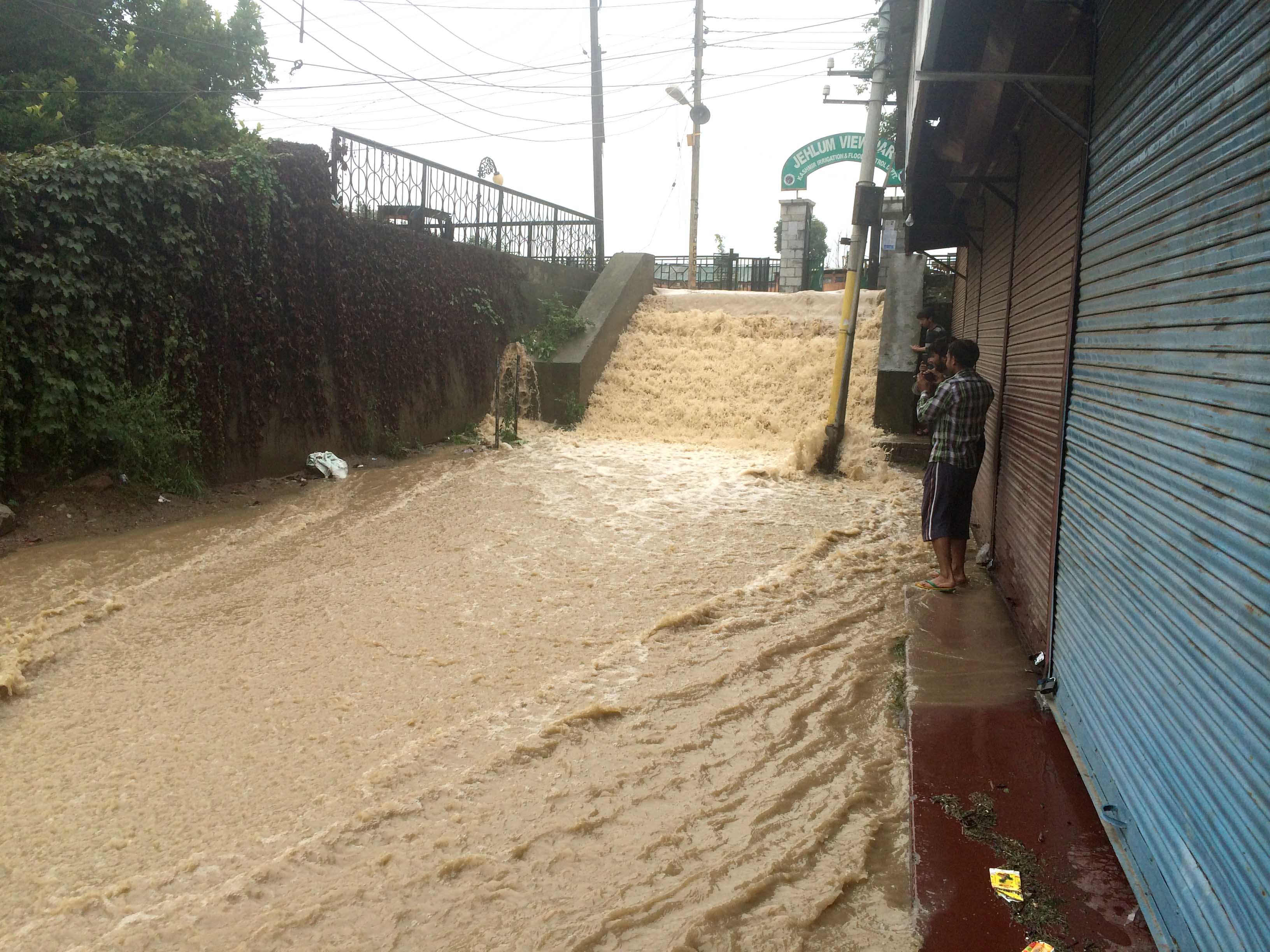
While the planners have taken degrading upstream, the failure in addressing the lake area is a serious concern. “Unless there is no huge capacity in the river to drain water at the tail end, the increase in capacity midway will not help,” one old engineer, who has worked on the project, said.
Now the Wullar is facing an additional crisis. After the NHPC diverted most of the Kishanganga water – from moving towards Pakistan-administered Kashmir, towards Bandipore, it eventually is a net addition to the Wullar lake. So the lake requires more space to retain water.
The NHPC has already added two more units to its twin projects in Uri to harvest the additional water. Even the Lower Jhelum Power Project, run by the state-owned PDC, may have to upgrade because there is more water available now. While every agency is investing to maximise the gains, no agency is working to improve the capacity of the lake.
The state and the central government had already invested a fortune in the lake by reviving the Tulbul Navigation Lock. Though this was supposed to improve the water level reportedly for navigation purposes, the planners are creating embankments to block more water and investing nothing much to improve capacity.
A lackadaisical attitude towards Wullar Lake has the capacity to destroy Kashmir. It needs to be prioritised as a matter of policy given its significance in the overall ecosystem of the place.
“If they really want to save Kashmir from floods, the I&FC department should start working from Wullar. Dredging of river Jhelum cannot save us,” laments a senior retired engineer. Governor Satya Pal Malik might have presided over the first meeting of his tenure on day one on Dal lake and flood management, but the policymakers must brief him properly about the issues involved.














